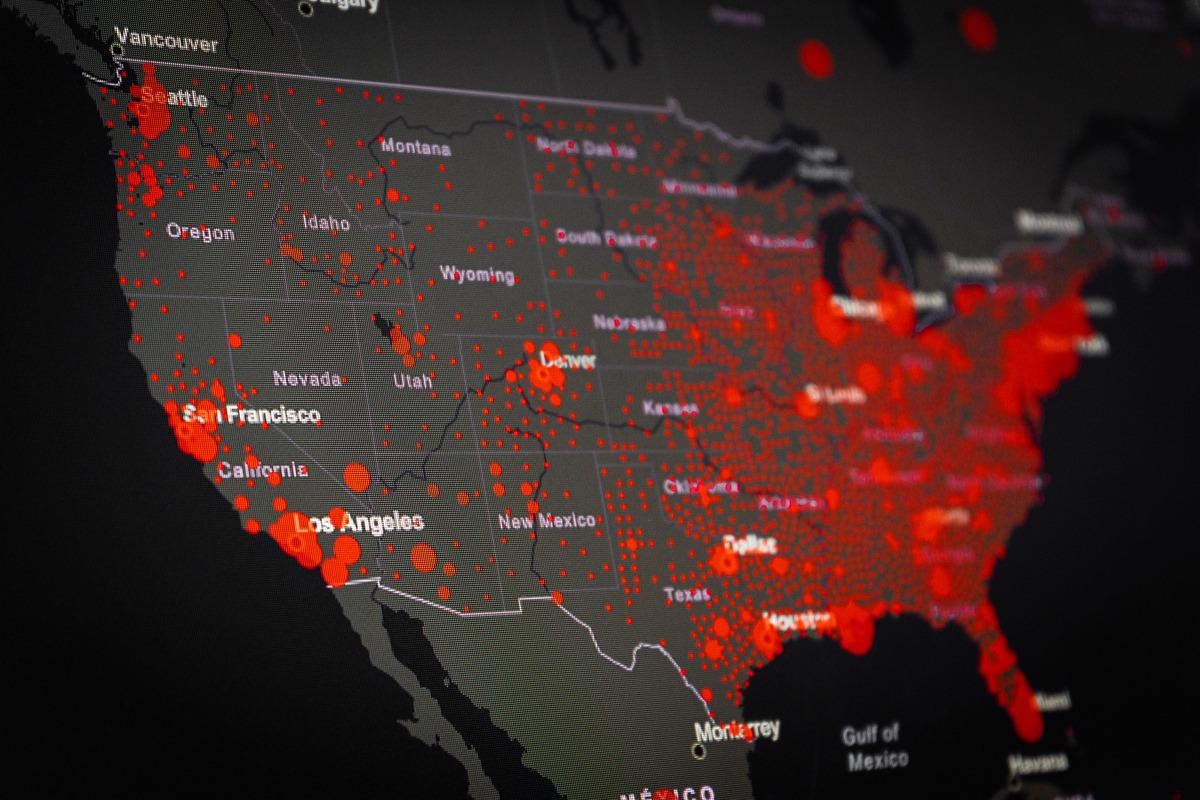In a recent study posted to the medRxiv* preprint server, researchers assessed the association of the spread of coronavirus disease 2019 (COVID-19) with the political climate in the US in 2020.
 Study: United States’ political climates and the spread of SARS-2-COVID-19 during 2020. Image Credit: Gargantiopa/Shutterstock
Study: United States’ political climates and the spread of SARS-2-COVID-19 during 2020. Image Credit: Gargantiopa/Shutterstock

 *Important notice: medRxiv publishes preliminary scientific reports that are not peer-reviewed and, therefore, should not be regarded as conclusive, guide clinical practice/health-related behavior, or treated as established information.
*Important notice: medRxiv publishes preliminary scientific reports that are not peer-reviewed and, therefore, should not be regarded as conclusive, guide clinical practice/health-related behavior, or treated as established information.
Despite having the most extensive health care system globally, the number of severe acute respiratory syndrome coronavirus 2 (SARS-CoV-2)-related fatalities in the US exceeded those in the rest of the world. Hence, the impact of the political climate in the country and its impact on the spread of SARS-CoV-2 in the US and related deaths needs further investigation.
About the study
In the present study, researchers explored the correlation between the political climate in each state of the US and Washington D.C. and the transmission of COVID-19 infection and consequent deaths in these states in 2020.
The team had pre-registered their predictions and analysis related to the association of US politics with COVID-19 spread in the form of four hypotheses: (1) Hypothesis 1 described that the incidence of COVID-19 cases and deaths will begin at higher per capita in polities that had a lower Republican-trusting political population, and will rise significantly in polities that have a higher Republican-trusting political population; (2) Hypothesis 2 described that the polities having more Republican-trusting political climates will display lower compliance with COVID-19 prevention measures such as wearing face masks and avoiding crowds; (3) Hypothesis 3 described that the impact of the political climate predicted by Hypothesis 1 will be at least partly accounted for by the polity-level differences observed in adherence to COVID19 -preventative behaviors; and (4) Hypothesis 4 described that the impact of the political climate predicted by Hypothesis 1 will be at least partly accounted for by the polity-level differences in access to health care.
The primary outcomes of the study included the number of COVID-19 cases and COVID-19-related deaths recorded per day in Washington DC and each state in the US for all the available dates in the year 2020. The team also included state-level predictors such as the political climate, demographic variables including population size, age of the population, the proportion of the population including People of Color, percentage of urban landmass; access to health care as evaluated by the number of federally funded clinics, number of patient visits, the proportion of the state having no health insurance; and the number of intensive care unit (ICU) beds per capita.
The team conducted a large national opinion poll in April 2020 and calculated scores for each state weighing between 0 and 3. Step 1 of the study analysis tested models representing latent factors of the political climate, COVID-19 preventative behaviors, and healthcare access. When access to healthcare was taken into account, the team considered its influence on COVID-19 cases and related deaths by employing three distinct measures such as medical access factor score, the proportion of uninsured persons, and ICU beds per capita.
Results
The study results showed that in the time models, each period had an intercept that corresponded to the number of COVID-19 cases or related deaths on the first day of that period and a slope. The base time model showed a total of 1.88 COVID-19 cases recorded per day per polity per 10,000 people in a population at the outset of the initial period, with a rise of 6% per day until day 50. On day 51, the team noted that the base time model recorded 19.49 COVID-19 cases with an average increase of 1% per day till day 150, with 1.28 COVID-19 cases recorded on day 151 with an increase of 2% till the end of 2020.
Furthermore, the base time model showed a total of 0.90 COVID-19 deaths on the first day of the early periods with a 2% increase per day till day 75. The team subsequently found 1.82 deaths per day with an increase of 1% every day till day 225, with 1.28 deaths recorded on day 226 with a 1.2% increase every day until the end of 2020.
The team noted that the number of COVID-19 cases rose faster in the initial periods of the pandemic in the least Republican-trusting US states; however, this trend reversed direction in the intermediate and later periods of 2020. Moreover, as predicted by hypothesis 2, the states having higher Republican-trusting populations showed a lower adherence to COVID-19 prevention behaviors. The researchers also observed that COVID-19 preventative behavior could reduce the impact of the political climate on COVID-19 cases and subsequent deaths.
Furthermore, per unit increase in the latent medical access factor, the number of cases was 37% lower in the intermediate, 27% lower in the middle, and 3% higher in the beginning periods of the pandemic. Also, as the proportion of people having no health insurance increased, the COVID-19 cases increased by 84% in the initial and 19% in the middle periods but reduced by 30% in the initial parts of 2020.
Overall, the study findings showed that the policies and ideologies encouraged by the Republican Party officials in 2020 were abided by the residents, resulting in an increase in COVID-19 cases and deaths.

 *Important notice: medRxiv publishes preliminary scientific reports that are not peer-reviewed and, therefore, should not be regarded as conclusive, guide clinical practice/health-related behavior, or treated as established information.
*Important notice: medRxiv publishes preliminary scientific reports that are not peer-reviewed and, therefore, should not be regarded as conclusive, guide clinical practice/health-related behavior, or treated as established information.